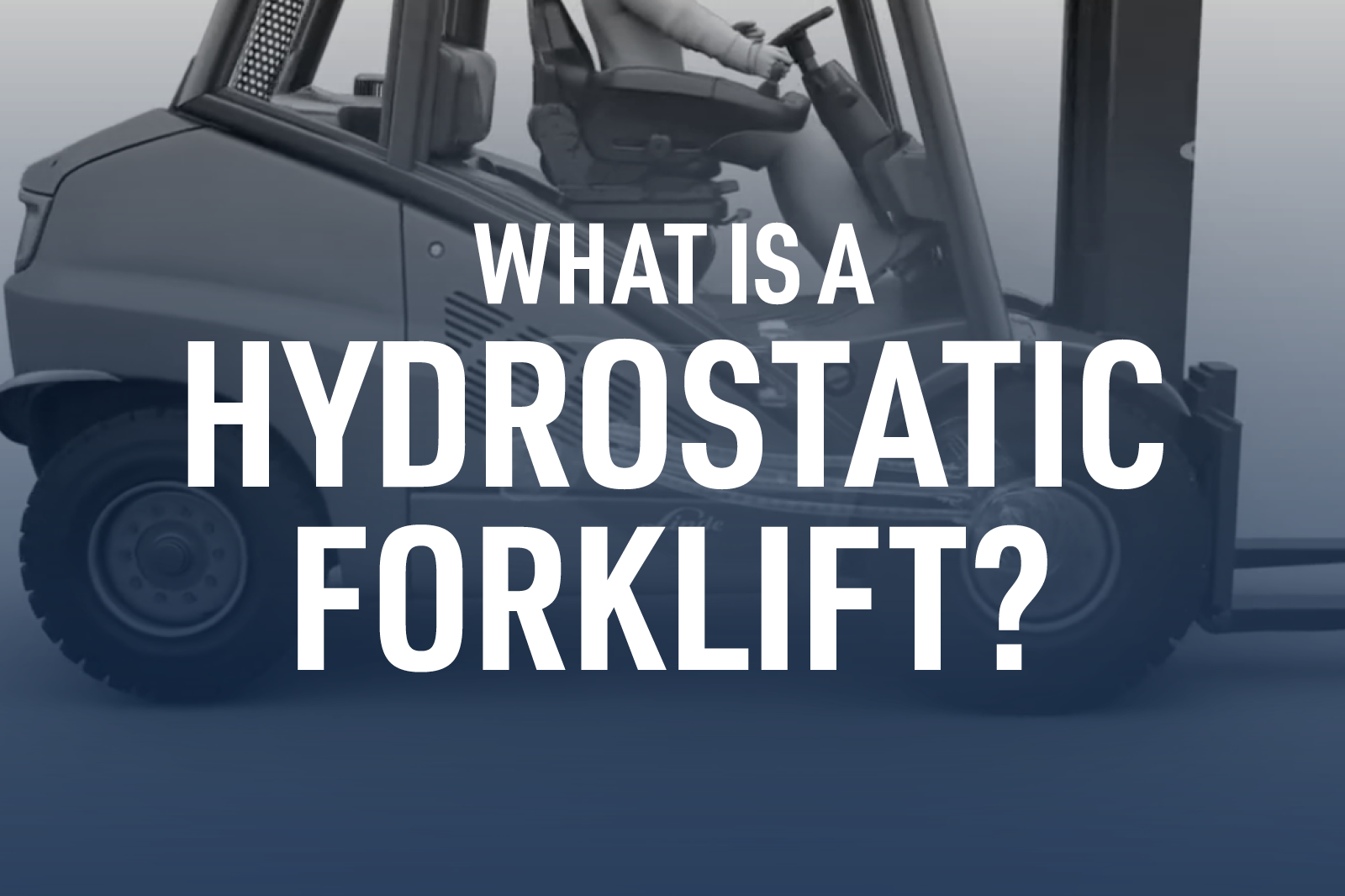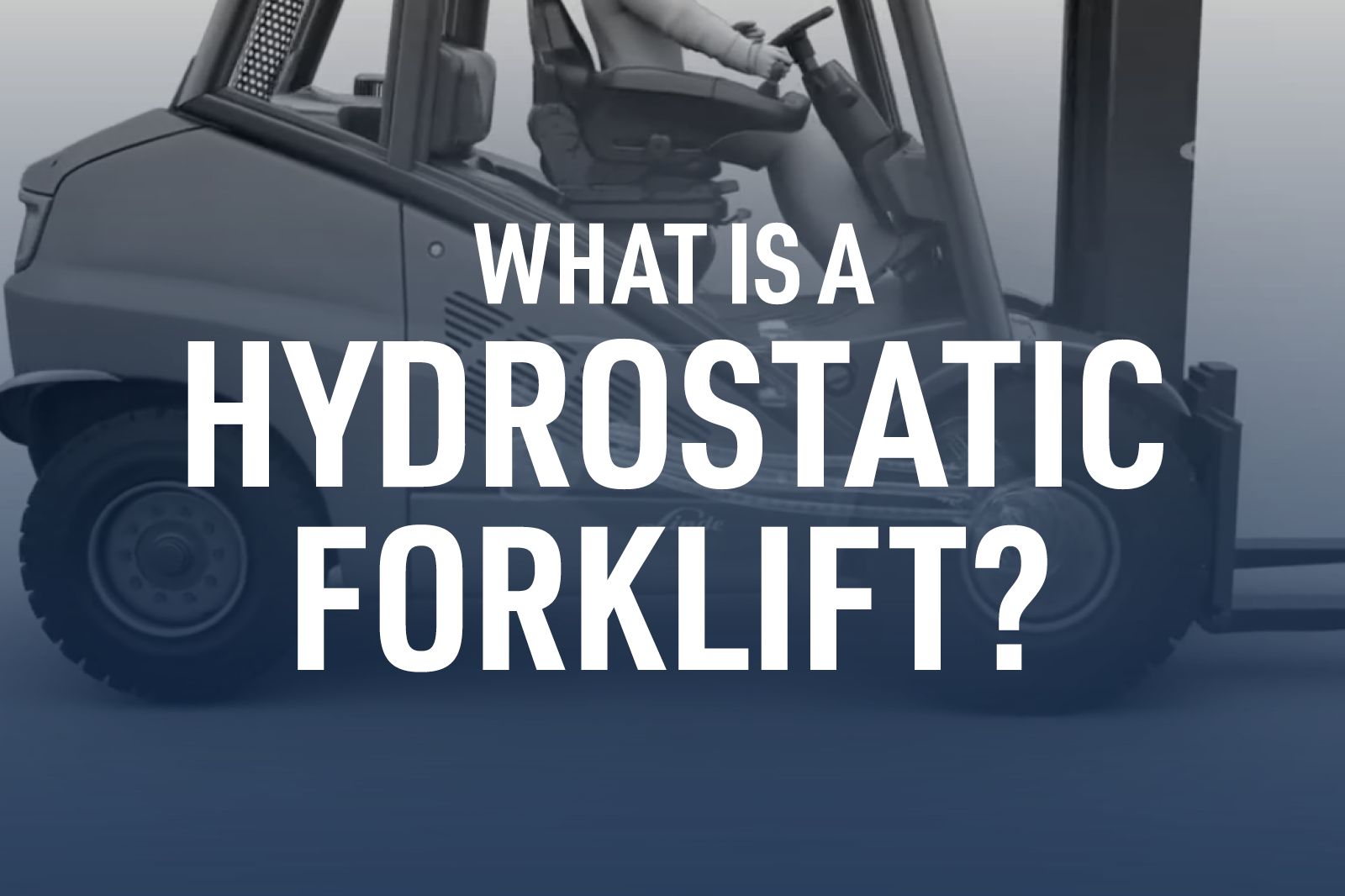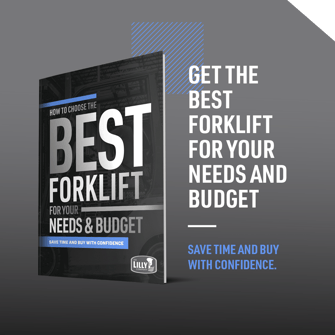

Hydrostatic forklifts are a powerful, fuel-efficient alternative to traditional internal combustion (IC) forklifts. Instead of using an automobile-style torque convertor, hydrostatic forklifts draw power from an efficient, enclosed hydrostatic drive.
Read on to:
- Watch a short video showing how a hydrostatic drive works
- Find out which applications benefit most from using hydrostatic forklifts
- Learn why hydrostatic forklifts are safer than traditional IC forklifts
What is a hydrostatic transmission, and how does it work?
Put simply: hydrostatic forklifts circulate hydraulic fluid to turn the forklift’s wheels. The animation below shows how Linde’s hydrostatic forklift transmission works.
If you’re short on time, skip ahead to the 1:06 mark.
Top 3 Reasons to Buy a Linde Hydrostatic Forklift
Compared to traditional IC forklifts, Linde’s hydrostatic drive forklifts give you:
- Smoother acceleration and braking
- More precise control
- A cleaner, safer work environment
- More power while using 40-50% less fuel
- Lower cost of ownership
Read on for more detail on the points above. Or contact a friendly forklift expert online or by phone at 844-LILLYCO (1-844-545-5926) with any questions you may have.
High Efficiency, Low Cost of Ownership
Hydrostatic forklifts are an economical alternative to traditional internal combustion forklifts because of what they don’t have. A forklift with a hydrostatic drive doesn’t have a clutch, gearbox or differential. No transmission means fewer parts to service and replace.
- The engine operates at lower RPMs, which means less wear and tear
- Hydrostatic-powered forklifts can’t spin their tires, so you’ll buy forklift tires less often
With the cost of gas and diesel going ever higher, a fuel-efficient forklift is a competitive advantage. Hydrostatic drives use 40-50% less fuel because the closed hydraulic system transfers power from the engine to the drive wheels and lifting system without any loss. The driver gets optimal power instantly and uses less fuel.
Linde’s H20–H35 and H35–H50 diesel and gas forklifts are the most efficient forklifts in their class. A certified performance test revealed Linde’s hydrostatic forklifts could move the same load in less time while also consuming less fuel. Linde hydrostatic forklifts also had the lowest total operating cost in a direct competitive environment, even after 20,000 hours.
More Environmentally Friendly Than Other Diesel Forklifts
If you’re not ready to make the switch to electric forklifts but still care about your environmental impact, look no further. Linde makes the most environmentally-friendly IC forklift. As mentioned above, hydrostatic drive forklifts use 40-50% less fuel than traditional diesel and gas forklifts.
A hydrostatic forklift also gives you a cleaner work environment. When your fleet burns less fuel, that means fewer emissions and cleaner air for your drivers, warehouse workers and guests.
Linde hydrostatic forklifts have disc brakes (aka wet brakes) that don’t emit brake dust – a common air pollutant in warehouse environments. Brake dust, when it inevitably settles to the ground, is responsible for most of the gray color in the concrete floors.
Traditional torque convertor forklifts are also hard on their tires, especially when paired with an overly-enthusiastic forklift operator. If you see skid marks on the floor, that means operators are spinning the tires – throwing tire dust in the air and significantly reducing the lifespan of your forklift tires. It’s impossible to spin the tires on a hydrostatic forklift, which keeps floors cleaner, reduces air pollution and ensures forklift tires last three times longer (on average).
Lastly, you’ll send less waste to the landfill. You’ll buy fewer parts and won’t have to dispose of dirty engine oil, brake fluid or transmission fluid.
Because Safety and Productivity MATTER
Hydrostatic forklifts create a safer work area for customers, forklift drivers and pedestrians.
- Braking initiates automatically whenever the accelerator is released. This gradual deceleration allows for smoother movements and ensures the forklift will quickly come to a halt if the operator becomes incapacitated.
- When you start up a hydrostatic forklift, its default state is at rest. It cannot be accidentally be put into gear.
- Hydrostatic drives are quieter than torque convertors, which improves operator awareness. They also create less vibration (a significant factor in driver fatigue and inattention).
- A hydrostatic forklift can be precisely maneuvered in tight areas where products, pedestrians and other equipment might be at risk.
They also improve productivity. When drivers feel safe handling loads, it improves their confidence and efficiency. Linde’s hydrostatic forklifts:
- Have a low center of gravity and high steering axle, which reduces the risk of overturning. Linde’s built-in Curve Assist adjusts the driving speed to the steering angle to reduce the risk of overturning when cornering.
- Overhead tilt cylinders and a warp-resistant mast design ensure a high residual load capacity and safe load handling, even with sensitive loads at lofty lifting heights.
- Linde Load Assist determines the forklift’s residual load capacity and reduces the risk of tipping accidents.
Linde’s load weight indicator, Linde Safety Pilot and Linde Safety Guard assistance systems can also be added.
What applications benefit most from a hydrostatic forklift?
- Foundries/Lumber Yards/Pipe Yards – In these applications, smooth control and 100% guaranteed braking are extremely important (life and death important!).
- Meat Packers/Produce/Seafood – Wet floors create serious corrosion issues for traditional torque convertor drive trains and braking systems. When you have a forklift with a sealed hydrostatic system and brakes, this is less of a worry.
- Warehousing – In a busy warehouse or distribution center, smooth control and reliable braking improve safety and spending less money on fuel is a competitive advantage.
- Food and medical facilities – Cleanliness, low emissions and low noise facilitate hygiene and product quality.
- Any business that wants to reduce expenses and improve their workplace environment.
What about service and repair?
Hydrostatic forklifts require minimal maintenance compared to forklifts with a traditional, automobile-style powertrain. How much less?
- Engine service intervals: every 1000 hours*
- Hydraulic fluid change: every 6000 hours*
- Change brake fluid: NEVER
- Replace brake pads: NEVER
- Change transmission fluid: NEVER
- Change oil: NEVER
*Based on typical use. High hours or extreme temperatures require more frequent service.
The Lilly Company is here to support you with factory-trained forklift technicians and maintenance plans tailored to your equipment and how you use it – no cookie-cutter plans here. In an emergency, we have mobile service vehicles ready to deploy 24/7.
Buy or Rent a Linde Hydrostatic Forklift
The Lilly Company is an authorized Linde forklift dealer proudly serving customers throughout the Mid-South. Our experienced material handling experts are committed to helping you find the right forklift for your needs and budget.
Contact a forklift expert at The Lilly Company online or by phone 844-LILLYCO (1-844-545-5926) with any questions you have, or visit one of our Linde forklift dealerships in Kingsport or Knoxville Tennessee.
We’d appreciate the opportunity to earn your business.
Further Reading:
Browse Linde Forklifts for Sale
Rent a Linde Hydrostatic Forklift and Try Before You Buy
For Used Linde Forklifts, please contact us for current inventory
Posts by Tag
- Forklift (67)
- Forklift Service (20)
- Electric Forklifts (17)
- Forklift Safety (15)
- Warehouse Automation (13)
- Forklift Attachments (12)
- Product Review (12)
- Toyota Forklifts (12)
- Warehouse Planning (11)
- Parts (10)
- Clark Forklifts (8)
- Pallet Racking (8)
- Customer Solutions (7)
- Loading Docks (7)
- Material Handling Education (7)
- Purchasing Options (7)
- Aerial Equipment (6)
- Forklift Batteries (6)
- Forklift Rental (6)
- Forklift Tires (5)
- Heavy Equipment (5)
- Forklift Accessories (4)
- Forklift Fleet Management (4)
- Forklift Training (4)
- Pallet Jacks (4)
- Products (4)
- Utility Vehicles (4)
- Yard Spotter Trucks (4)
- Komatsu (3)
- Linde (3)
- Specialty Forklifts (3)
- Used Equipment (3)
- Warehouse Doors (3)
- IC Forklifts (2)
- Manitou (2)
- COMBiLift (1)
- Custom Shop (1)
- Forklift Brakes (1)
- Forklift Warranty (1)
- Gehl (1)
- Recruitment (1)









